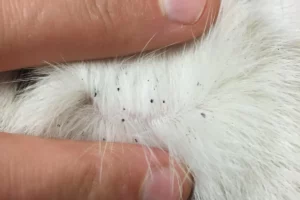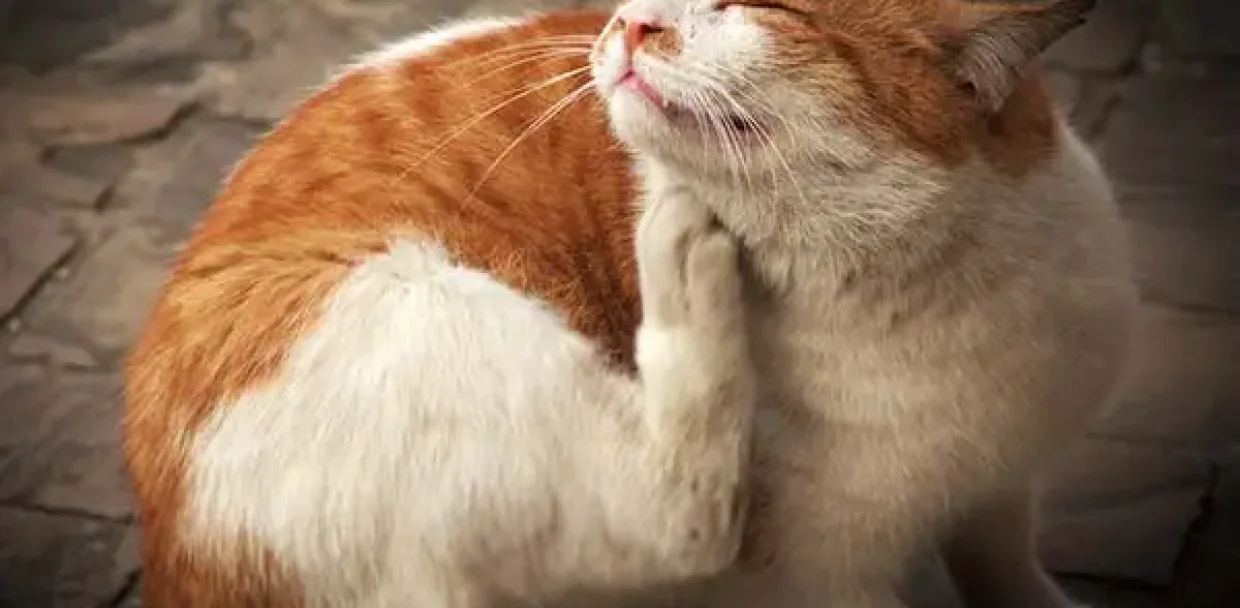Oh, how fun it is to have a cat around you all the time and to play with. The fun doesn’t last for long after you notice a black spot on your cat. You take a closer look at it and to your disbelief, you see a flea. The worst nightmare of every cat owner.
Well, it is common for outdoor cats to get fleas but can be pretty shocking to find fleas on indoor cats. You might state an argument saying that your cat rarely goes outside and the space your cat is living in is also clean. So, it is impossible for your cat to get flea.
It is possible, even for indoor cats to get fleas. They might have a low chance compared to outdoor cats but they are not safe. So, how do the flea reach inside your household to your cat?
It is better to know a little about fleas and how this tiny little creature can be a nightmare to every cat owner.
 Here are some ways you can prevent it from happening:
Here are some ways you can prevent it from happening:
 Not all cats prefer bathing. So, do not force your cat to bathe otherwise it will affect them negatively. It might take yo few practices and lots of patience. You can take them to the professional groomer for the flea bath as well. They will have proper staff and techniques to get the job done.
Not all cats prefer bathing. So, do not force your cat to bathe otherwise it will affect them negatively. It might take yo few practices and lots of patience. You can take them to the professional groomer for the flea bath as well. They will have proper staff and techniques to get the job done.
Fleas- Nightmare to Cat Owners
Flea is the most common external parasite that lives on its host’s whole life and feeds on its blood. Their favorite food is blood especially animal blood like cats and dogs. They do not like human blood as much as cats or dogs.Fleas can jump thirty thousand times in a row. They can jump so high that if they were human then they would be able to jump over the Eiffel Tower.So, if they are in a human body and notice an animal’s host around then it would happily leave the human host and jump toward its favorite meal. That is why we rarely hear about a human getting flea infestation. Funny enough, we are not their favorite. Fleas also prefer to live in a warm and dark environment. They thrive in such an environment and are able to complete their lifecycle. So, why it can be a nightmare? One reason is that no one likes tiny blood-sucking insects hanging around them and another reason is fleas can transfer many harmful diseases to the host. Some common feline diseases carried by the fleas are:
-
Tapeworms
-
Haemobartonellosis
-
Cat Scratch Disease
- Infection
- Dermatitis
- Anemia
Ways Indoor Cats can get Fleas
A clean environment doesn’t determine whether your cat will get fleas or not. There are different potential transmitter around us that carries flea and pass them to the cats. The potential transmitter also being us. Yes, you heard it right we are also responsible in some way. Here we have listed other potential mediums for the flea to reach your indoor cats:Other Pets
If you own more than one pet and if your cats coexist with dogs then the chances are your cat got flea from your dog. Dogs are usually taken for walks so, during the walks the flea might have jumped on your dog’s body and entered your house. The flea then moves to the warmer place of your home and starts to lay eggs. The eggs then fully develop into fleas and infiltrate your indoor cat’s body. There are chances of fleas entering your household if you allow other pets to visit your home. They can also bring the flea and then transfer it to your cat.Humans
Fleas are inclined toward a warm environment, so they hang onto humans and their clothes and shoes. They are so tiny that we cannot see them with the naked eye and requires great focus to notice one. So, the fleas jump on our bodies and hitch a ride to our home and we might not even notice it. This way the fleas can enter our homes right under our noses. Then they start to infest the area and jump on your indoor cats as well.Wild animals
Your cat won’t go into the wild to hunt for their prey, but the prey comes from them. The most common animals seen around the household are rodents. They are also hot bodies for fleas to feed on. So, the flea also clings to these wild creatures and can enter your household. And we all know the popular cartoon Tom and jerry, which portrays s the relationship between the cats and the mouse. If a cat notices one then it couldn’t leave it alive. Some rodents may not come in sight with your indoor cats but still, the flea can drop its eggs in the home which may grow to be an active flea, and infest your household.Outdoor Visit
We cannot be sure that indoor will cat always remains indoors. Different circumstances may arise where your cat might need an outdoor visit. Like, you need to take them to the vet, to a groomer, or even to a cat sitter if you have a busy life. This exposes your cat to the outdoor environment which is full of fleas. So, it is not surprising for your cat to get fleas during that time.Second-hand Items
When we bring second hands goods from charity shops, flea markets, and antique shops, the items are likely to have flea. The items can carry potential eggs of the flea. So, it is recommended to thoroughly clean the object to make sure all the eggs and the flea are dead and removed.Moving to a New Home
You might have heard different cases of flea infestation of many people after moving to a new house. Well, it is not surprising to hear that. This happens when the previous owner of the house had pets, the flea’s eggs and larva might be left behind in the moving process. These left-behind fleas and eggs stay dormant for a long time until they find a host. After the new owner moves to the house, they start to develop and feed on the blood of the new host like your pet animals like cats.How to Know if Your Cat Has Fleas?
Fleas are so tinny for a naked eye to see. Sometimes we might not see it even if it is right before our eyes. So, during those times you need to look out for the signs and do a close inspection of the skin of your cat. Here are the signs that your need to look out for:- Loss of Hair
- Black specks, resembling the flea poop or flea dirt on cats’ fur
- Excessive grooming and itching on a particular area
- Reddish color when cleaning the cat
- Extreme Vocalization
How to Prevent Flea?
Flea infestation is not a nice experience for both the cat owner and the cat. So, if we notice one then we eagerly want to remove it. If a flea infestation goes out of hand then it is hard to control. So, we want to prevent it firsthand. Here are some ways you can prevent it from happening:
Here are some ways you can prevent it from happening:
Visit to a Vet
If your cat has flea then yoru can take your cat to the vet. The vet doctor will approach you with a couple of options for your cats flea treatment. They are the best option for you when treating flea that is safe for your cat. The vet will recommend you different product that is safe for your cat and will remove the flea quickly.Cleaning the Environment
If your cats get flea then it doesn’t mean that your surrounding is not clean. A flea can thrive even in a clean home as long as it is warm. So, you don’t need to be shocked to see fleas on your cat. If you notice any infestation on your cat then it is important to remove the fleas from your cat and from your home. Cleaning and vacuuming your home thoroughly is one way and using flea prevention is another added way. If you are not confident with your cleaning then you can even hire a professional cleaner who specializes in flea removal. It will cost you a few bucks but the whole process is worth the price.Providing Flea Bath
A flea bath is another way to remove the flea from your cat. A single bath won’t be enough for yoru cat to completely remove the flea. Likewise, a flea bath should be followed by flea shampooing and flea combing. This kills the flea ad removes it from the cat’s body. Not all cats prefer bathing. So, do not force your cat to bathe otherwise it will affect them negatively. It might take yo few practices and lots of patience. You can take them to the professional groomer for the flea bath as well. They will have proper staff and techniques to get the job done.
Not all cats prefer bathing. So, do not force your cat to bathe otherwise it will affect them negatively. It might take yo few practices and lots of patience. You can take them to the professional groomer for the flea bath as well. They will have proper staff and techniques to get the job done.




